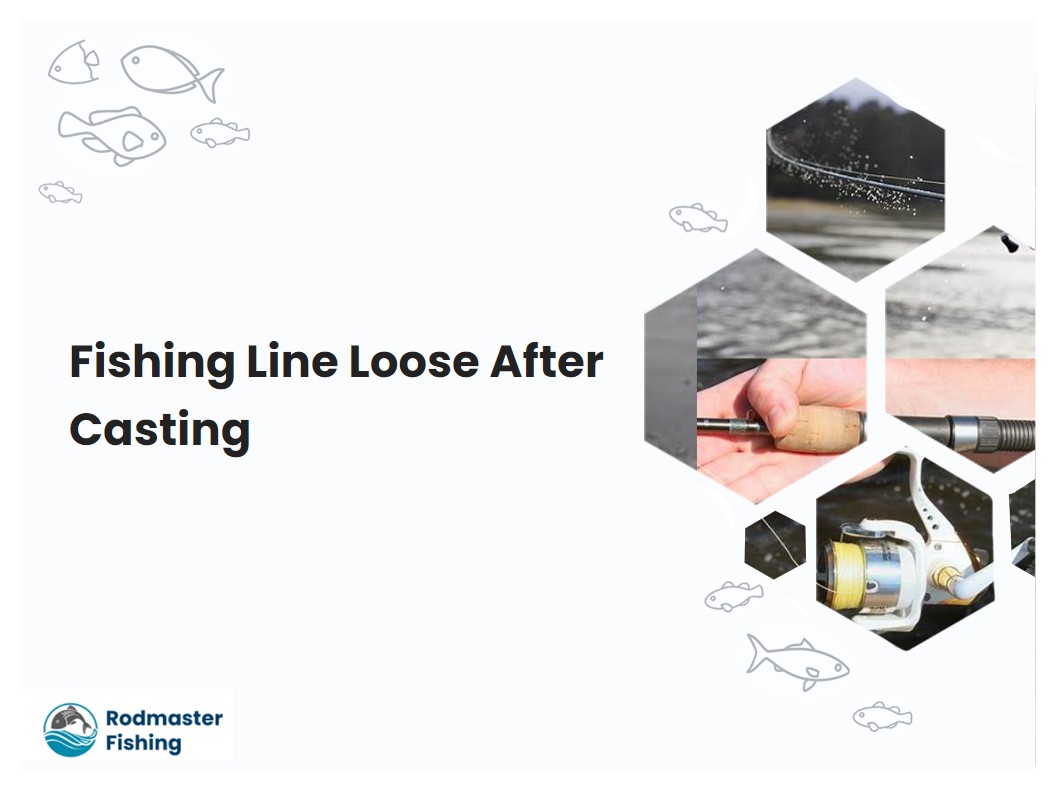Fishing Line Loose After Casting
The best way to keep a spinning reel line trouble free is to let the line out behind the boat as you travel down the lake, and wind it back on when you stop. Alternatively, tie the end of your line to something and walk away while letting the line out. According to wikiHow, it is also important to regularly clean and lubricate the reel and line to ensure optimal performance.

The best way to keep a spinning reel line trouble free is to let the line out behind the boat as you travel down the lake, and wind it back on when you stop. Alternatively, tie the end of your line to something and walk away while letting the line out. According to wikiHow, it is also important to regularly clean and lubricate the reel and line to ensure optimal performance.
How do you fix a loose end on a fishing line?
Fishing lines can get tangled when casting due to improper spooling, insufficient tension, or too much line on the spool. Urban Adventure states that one can fix a loose end on a fishing line by soaking the spool, slightly heat the line, and then drying it thoroughly. Anglers should ensure that the line is spooled properly and with the correct amount of tension for optimal casting performance.
How does fishing line work?
Tightening fishing line is an important part of the fishing process that helps ensure your catch. To do this, you need to make sure that the line is loaded onto the spool correctly and has some memory, so that it retains its shape. According to FishTackly, it is also important to use a tool such as pliers to tighten the line, as well as make sure the knot is secure so that it does not come undone during the fishing trip.
Why does my fishing line get Curly when fishing?
The main reason why a fishing line gets curly when fishing is because the drag on the reel is not set high enough. FishTackly suggests that you can tighten your fishing line by adjusting the drag setting on your reel, which will help stop the line from coming off the spool when a fish pulls on it. It is important to ensure that your reel is not too loose as this can also cause the line to become curly.
How can I use loose line on a baitcaster?
The technique of having loose line deep in the line on a baitcaster can be done by keeping tension on the line spool and making sure the first wraps of the new line are tight to the spool. This technique was discussed in the Bass Fishing Web forum in 2012. Using a soft cloth with warm water can help make sure the line is properly attached to the spool.
How can a tight fishing line be achieved?
Maintaining a tight fishing line is necessary for successful angling, and can be achieved by casting a larger cast, adjusting line guides, or tightening knots. According to an article by Carp Fishing UK, on carpfishinguk.org, in December 2022, it is important to ensure your line is tight to ensure accuracy and reduce tangles. Many professional anglers use specific knots and line guides to ensure the most effective line tension.
Fishing lines can become curly, knotty, or loose if the attachment to the reel is incorrect. To ensure a secure attachment, it is best to have a professional at a fishing tackle shop use a spooling machine to attach the line.
How should fishing line be cared for?
Fishing line care is important for successful angling, and avoiding common mistakes like letting the reel handle the line and not being mindful of changing conditions can help ensure success. According to Wired2Fish.com, there are 10 common mistakes to avoid when it comes to fishing line care. Regular maintenance of your fishing line, such as replacing it every few seasons, is important for optimal performance.
Can I soften fishing line?
To reduce fishing line tangling when casting, it is best to immerse the spool of line in warm water to soften it, which helps it uncoil more easily. This has been suggested by Outdoors Niagara in 2021, and is also supported by a study that found that softening the line increased casting distance and accuracy.
Do you replace your fishing line annually?
Most anglers should replace their fishing line once a year, while professional and die hard anglers should change it every 3 to 6 months. Casual anglers can use the same line for a few years, depending on the type of line used and how often they fish.
How can I set the hook when fly fishing?
To properly set the hook and strip line when fly fishing, it is important to immediately place the fly line under the index finger of your rod hand after the cast. This allows you to better control the line in order to set the hook and strip the line to make sure the fly is on target.
Can I pinch the line?
To tighten fishing line, lightly pinch the line between the rod and rod hand while slowly reeling the line back into the spool. According to FishingForBeginners, this should provide enough tension to keep the line tight. It is important to use the proper tension when fishing, as too much or too little can cause knots and tangles.
What is the best way to cast a spinning reel?
To cast a spinning reel for the best catch, start by taking the rod back over your shoulder and holding the line with your index finger, then look back to make sure you have a clear path forward. Ensure you keep your focus on your target throughout the cast as this will increase accuracy.
What size line should I use?
Using the correct size of line, as recommended by the manufacturer, is essential for optimal reel performance and avoiding tangles and knots. According to Game and Fish Mag, many anglers don't follow this rule and end up with performance issues as a result. Anglers should make sure their reels are properly lubricated and maintained in order to ensure maximum performance.
Do you close the bail after every cast?
To prevent fishing line tangles, it is important to manually close the bail after every cast and pull the line tight from the reel. Doing so helps reduce initial line twist and improves casting accuracy.
Can drag be set incorrectly?
Incorrectly setting the drag on a spinning reel can lead to line tangles. Loose brakes on spinning reels allow too much fishing line to be released, resulting in the line getting twisted as it is being reeled in.
How to avoid wind knots?
When casting a lure, it is important to take steps to prevent and remove wind knots. One of the most effective methods is to stop the cast by hand when the lure is about to hit the water, and then close the bail manually to ensure the line is tight. It is important to avoid overfilling the spool with line, as this can cause the line to become tangled.
Is the drag set correctly?
A loose fishing line can be attributed to an incorrectly set drag on the reel, which controls the resistance when pulling in the line. According to Epic Fishing, this can be easily rectified by adjusting the drag setting on the reel. Using a lubricant on the spool can also help to tighten the line.
How can wind knots be avoided?
Wind knots and tangles can be avoided when using braided lines by first removing any loose wraps from the spool before casting, using a lighter line for more distance, and employing a higher line capacity reel. According to SaltStrong.com, it is also important to use an appropriate rod and reel setup to ensure proper line distribution. Storing your line in a cool, dry place will help prevent it from developing wind knots.





